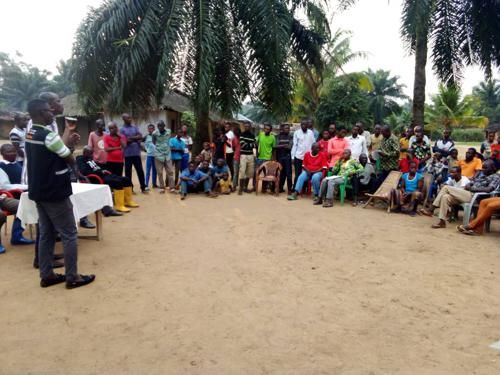
Cobalt Red: How the Blood of the Congo Powers Our Lives pulls back the cover on work in the cobalt mines of southern Congo. Published this year, the book focuses on the deaths and maiming of children and the multiple harmful effects on all miners in the cobalt artisanal and small scale mining (ASM) sector. Now producing an estimated thirty percent of the Congo’s exported cobalt, individual miners are crucial to meeting the high tech industry’s need. Congo now supplies up to 70 percent of cobalt for electronic devices ranging from mobile phones to playstations. Demand has rocketed up as consumers now opt for purchase of electric vehicles (EV’s) whose batteries contain 10 kilos of cobalt each.
In December 2019, 14 guardians or parents of child miners charged the U.S. high tech industry with trafficking and forced labor of children in Congo’s cobalt extraction. The book’s author and researcher, Siddarth Kara served as consultant to the lawyers of the International Rights Advocates that presented the case in a DC court. The lead attorney, and IRA director, summarized the grounds for the case, “In my 35 years as a human rights lawyer, I’ve never seen such extreme abuse of innocent children on a large scale. This astounding cruelty and greed need to stop”.
One of the defendants in the case, Microsoft had a spokesperson respond, “While we continue to work with non-governmental organisations to help bring an end to child labour in the DRC and beyond, we have filed a motion to dismiss this suit”. In a conclusion for this area of his research, Kara calls the NGO efforts at monitoring to be nothing more than a smokescreen provided Microsoft and the other defendants Apple, Alphabet (Google), Dell, and Tesla.
Contrary to the Congolese government’s pledge of free public education through middle school, fees must be paid to the school to employ a teacher and enroll a child. The goal of providing their children an education was shared with Kara by many of the artisanal miners including some of the children mining. For a nation endowed with abundant sought after resources, it is shocking that the national budget cannot meet the bill for free education in the primary grades. Kara cites that the entire 2021 national budget totaled $7.2 billion, comparable to that of the State of Idaho with a population one fiftieth the number of Congolese. The budget increased very little from 2019-21 in spite of the 100 percent increase in the global price for cobalt.
The neo-colonial structure of Congolese resource extraction supplies only a few nationals with massive wealth. To support this claim one need only cite that there has been no accounting of Chinese payments for southern Congo’s mines and processing plants during the previous administrations of the Kabilas, father and son. The structure of corruption benefiting the Congolese elite is accompanied by the foreign companies’ rigged accounting and white washing of their mining practices. A Chinese mining company employee told Kara that his company and most other Chinese companies in Congo keep two sets of books: one set for internal use only and one they call the “official” version of their business activity.
Beginning with the trade in slaves the Congolese later satisfied the global demand for ivory followed by rubber, palm oil and now several strategic minerals for weapons of modern warfare and for battery manufacture by the high tech industry. The systems of resource extraction initiated by Belgian King Leopold’s Congo Free State and followed by the colony of Belgian Congo are now implemented by the neo-colony of the Democratic Republic of Congo. Each system of governance has positioned Congo to contribute the preponderant share of many vital resources to the global economy.
As a long time importer of Congo’s mineral wealth, it is no surprise that the U.S. District Court in the nation’s capital dismissed the case against the high tech companies. In his ruling Judge Carl Nichols echoed the companies’ position that the multi-layered cobalt supply chain releases them from responsibility. Nichols held that the “the only real connection is that the companies buy refined cobalt”. The companies seem, however, to acknowledge their leverage in the supply chain. As the Microsoft spokesperson averred before the suit’s dismissal, “We hold our suppliers to the high standards prescribed in our supplier code of conduct, including upholding human rights, labour, health and safety, environmental and business ethics”.
You may follow the progress of the ruling’s appeal by the International Rights Advocates at their website, https://www.internationalrightsadvocates.org/
Potentially more significant is a mining reform enacted by the Congolese government. “From now on all Congolese artisanal cobalt will be bought by EGC (General Enterprise of Cobalt), processed by EGC, and marketed by EGC,” said Albert Yuma, chairman of EGC and the state mining company Gecamines.
EGC, together with PACT, a non-government organisation active in monitoring artisanal mining, will ensure responsible mining standards with marketing partner Trafigura providing support on traceability down the supply chain. According to a Reuters report of May 2021, EGC will be the first attempt in the world to create oversight of the artisanal and small scale mining (ASM) practices. However, Kara found that the EGC partner in monitoring the ASM sector, the D.C. based non profit, PACT, has contributed to the smokescreen created by the high tech companies. With cobalt projected to remain an essential element in the shift to renewable energy, ending forced labor of children in ASM of cobalt will continue as a vital issue in the economy of southern Congo and likely to be significant as well in this year’s Presidential election.
For more on Congo’s mining of cobalt and the Chinese control of the global supply chain, use the search engine of this blog by entering “Cobalt” in the Search window.





























